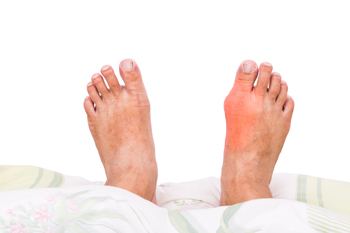Can Children Get Bunions?
Tuesday, 06 July 2021 00:00A bunion (Hallux Valgus) is a bony bump where the big toe joint attaches to the foot. While bunions are more prevalent in adults, they do occur in children and, especially girls. Having loose joints, feet that roll inward, and other structural anomalies in the feet can all contribute to the formation of a bunion. Other factors such as heredity and wearing narrow or high-heeled shoes play a part as well. To help prevent bunions from developing, parents should make sure the shoes their children wear are fitted properly, and switched out as frequently as the child’s foot grows. If the child complains of pain in the bone just behind the big toe (first metatarsal), has a sore bump, swelling at the base of the big toe, discomfort while walking, or a numb or burning sensation, this may be an indication of a pediatric bunion. It is suggested that a podiatrist be consulted for an examination and X-ray to help diagnose and treat the issue.
If you are suffering from bunion pain, contact one of our podiatrists of North Bay Ankle & Foot Center. Our doctors can provide the care you need to keep you pain-free and on your feet.
What Is a Bunion?
Bunions are painful bony bumps that usually develop on the inside of the foot at the joint of the big toe. As the deformity increases over time, it may become painful to walk and wear shoes. Women are more likely to exacerbate existing bunions since they often wear tight, narrow shoes that shift their toes together. Bunion pain can be relieved by wearing wider shoes with enough room for the toes.
Causes
- Genetics – some people inherit feet that are more prone to bunion development
- Inflammatory Conditions - rheumatoid arthritis and polio may cause bunion development
Symptoms
- Redness and inflammation
- Pain and tenderness
- Callus or corns on the bump
- Restricted motion in the big toe
In order to diagnose your bunion, your podiatrist may ask about your medical history, symptoms, and general health. Your doctor might also order an x-ray to take a closer look at your feet. Nonsurgical treatment options include orthotics, padding, icing, changes in footwear, and medication. If nonsurgical treatments don’t alleviate your bunion pain, surgery may be necessary.
If you have any questions, please feel free to contact our offices located in Petaluma and Sonoma, CA . We offer the newest diagnostic and treatment technologies for all your foot care needs.





